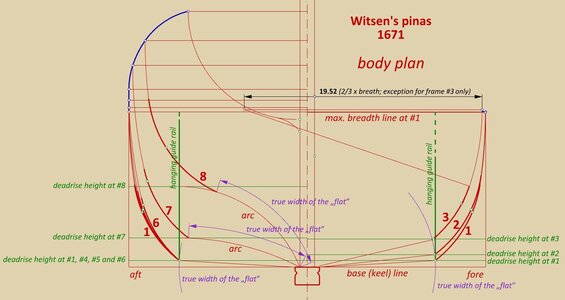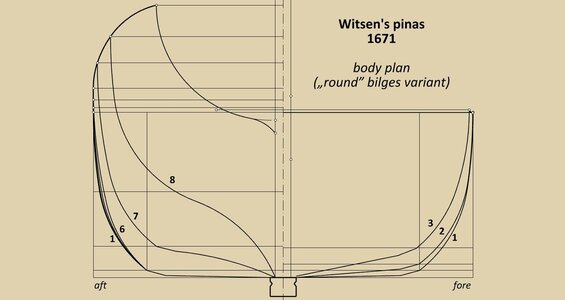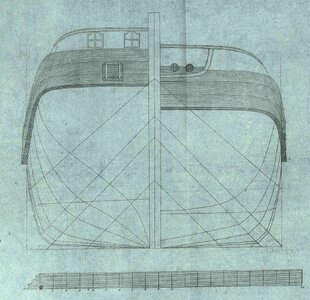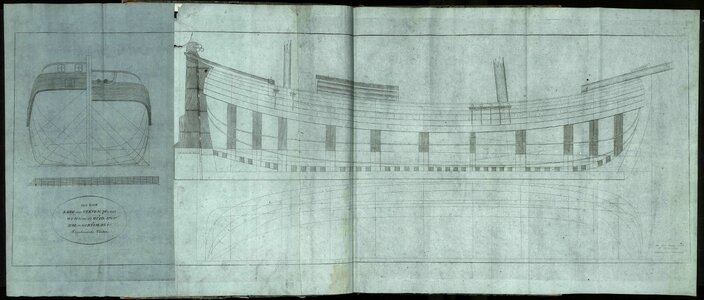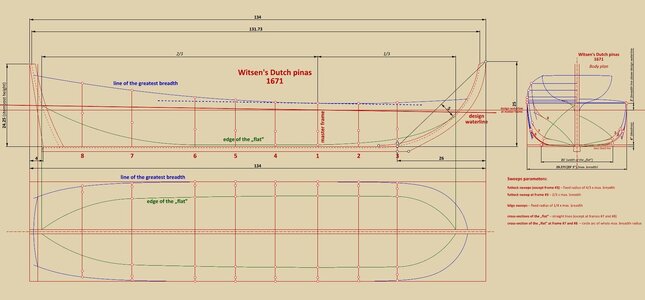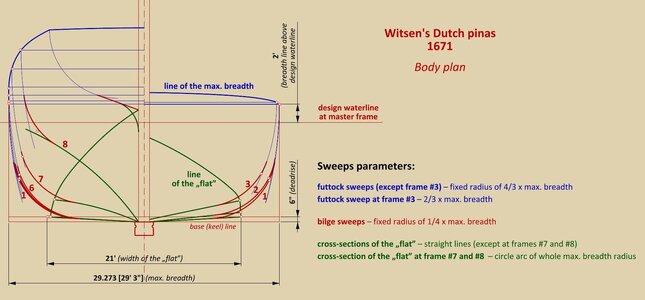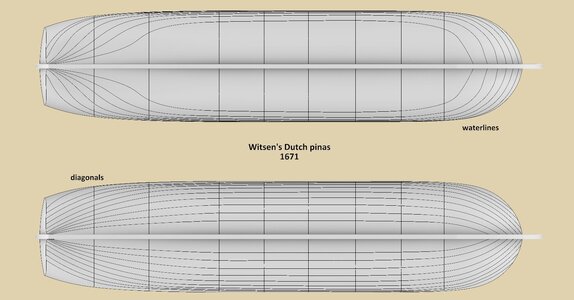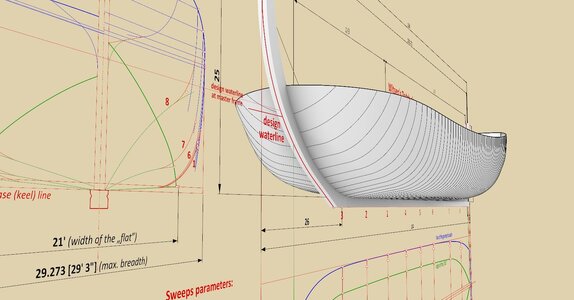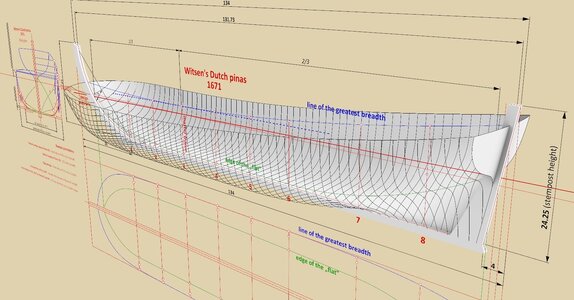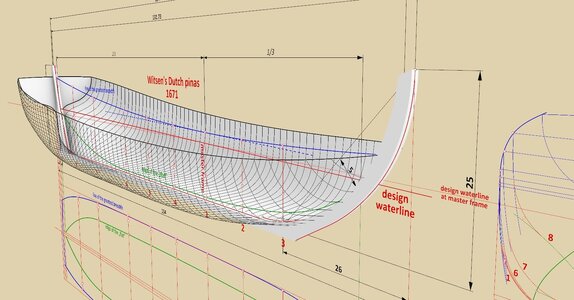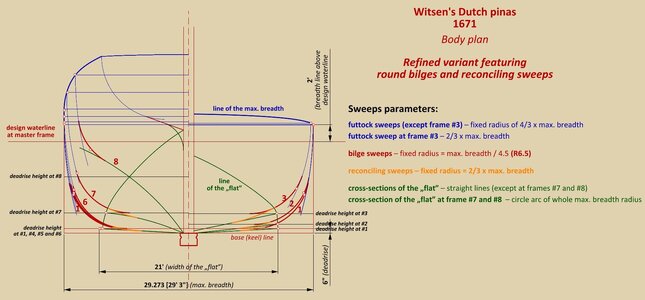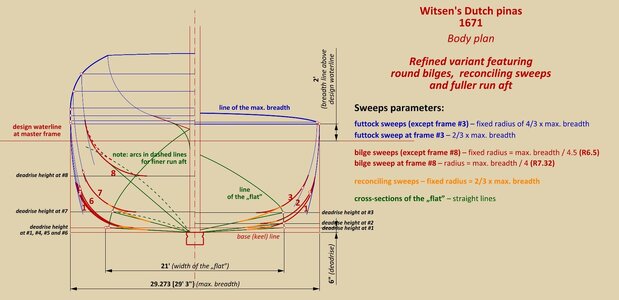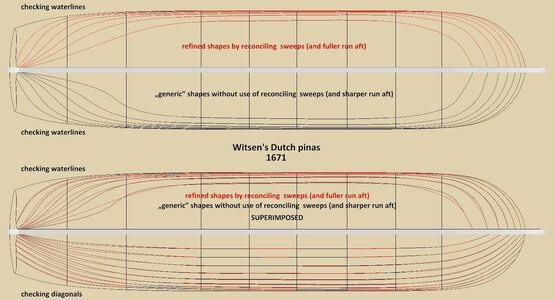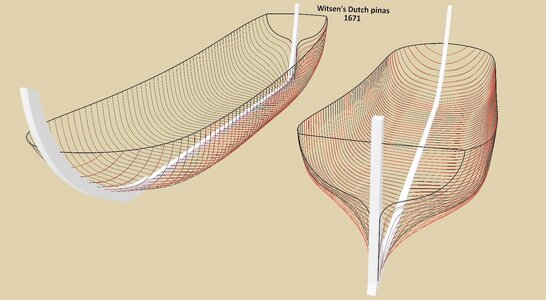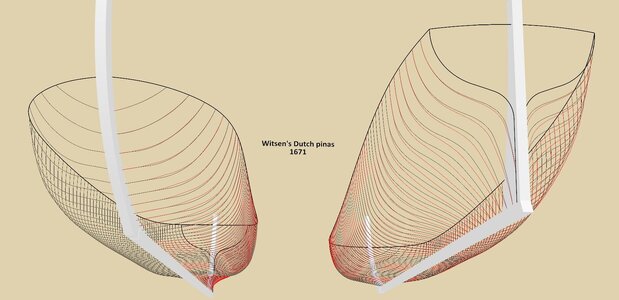.
Even before starting the presentation of another ship design in the North Continental/Dutch tradition (a Russian whaling heckboot of 1724, designed by a slightly later, more modern design method), I would like to show another, also possible, way of interpreting the numerical data of the pinas hull left by Witsen. The way shown below makes it possible to shape the hull of the pinas featuring ‘normally’ rounded bilges, the radius of which, it is worth noting, here has a typical value for a warship, equal to 1/4 of the breadth of the hull (according to Witsen's assurances, the pinas was intended to be a universal vessel, i.e. also suitable for military purposes). As in the first interpretation, that is sporting sharp bilges, by this method also a perfect correspondence between the reconstructed lines and Witsen's co-ordinates has been achieved (for easier comparison, the original co-ordinates from Witsen's work are again indicated as small red circles in the diagram).
The peculiarity of this method of designing comes down to the fact that the ‘flat’ cross sections, defined in the first instance, are later truncated, as it were, by the bilge sweeps, which are drawn at the very end as tangents to both the ‘flat’ cross sections and the futtock sweeps. Judging by other designs of the period, one might even say that this is a fairly typical or common design procedure.
The main, longitudinal design lines were unchanged from the first variant, but I am nevertheless reattaching the side projection because a design waterline was added to the reconstruction of the pinas shape (and its design method as well). At the master frame, the waterline was set at the typical distance of two feet below the maximum breadth line, and then angled to a trim of two feet. In this way, it synchronises perfectly with the existing reconstruction. In particular, its run falls, as it should, at the already determined tuck height, and the line of greatest breadth on the side projection is perfectly tangent to the auxiliary line parallel to the waterline thus drawn (blue dashed line in the diagram).
.
